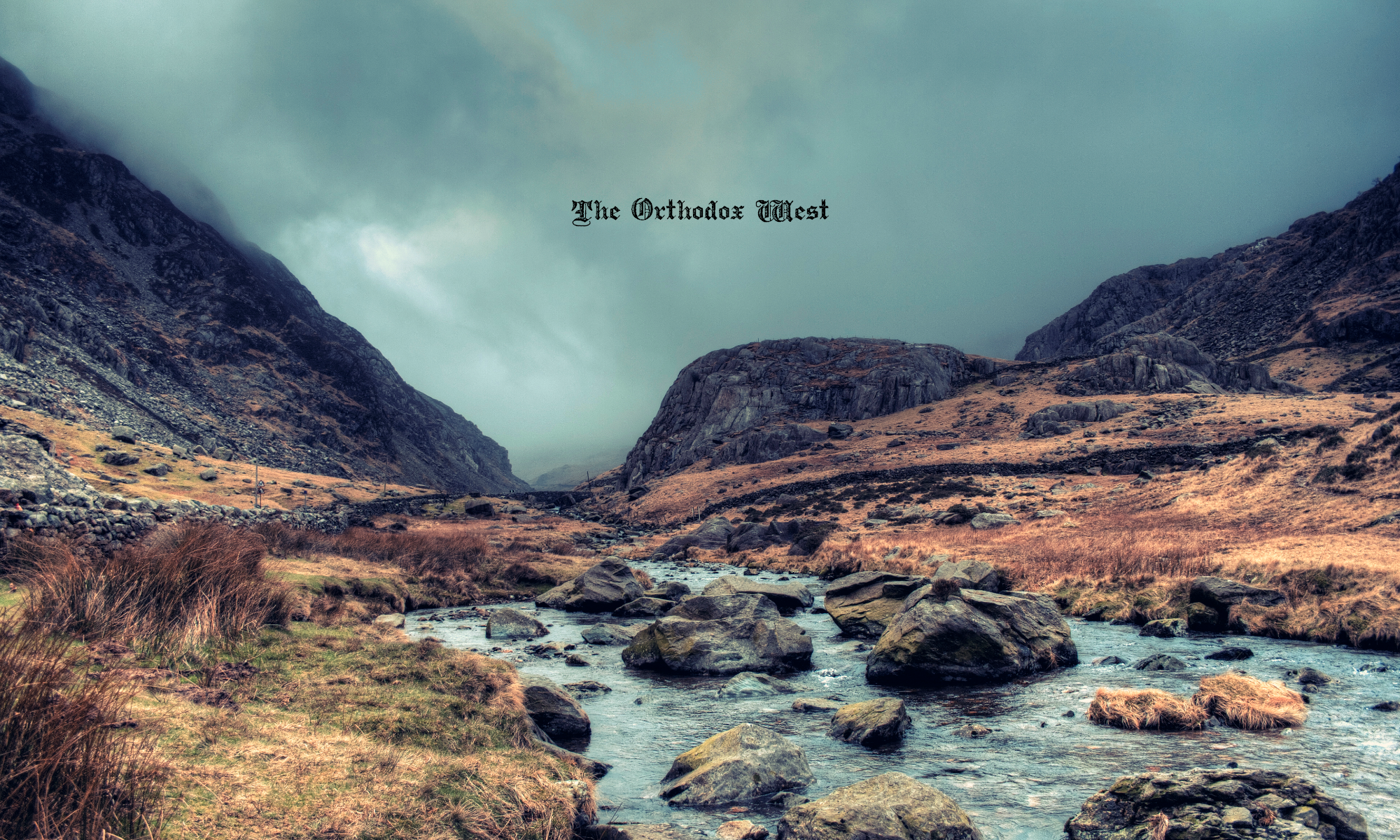Arrived on the Holy Island of Lindisfarne – sometime home of St. Aidan and St. Cuthbert – at safe crossing time of about 7pm (one must wait for low tide). Stayed at the Open Gate Retreat House….


It was a few miles down the coast to Seahouses for the trip to Inner Farne Island, the site of St. Cuthbert’s retreat and place of his repose.

Prayed the Litany to the Holy Name of Jesus and other prayers in the Chapel on the island, stood briefly in the North Sea (though not up to my neck) and gathered more stones- I waited for the otters to dry my feet, but to no avail –they respond to holiness, I suspect, not to wishful thinking.




Returned to Holy Island to explore St. Mary’s Church where the original sculpture in wood of “The Journey” is located. It depicts six monks bearing the body of St. Cuthbert as they journeyed for years, fleeing the Vikings, until finding his final resting place at Durham, after a lengthy stay at Chester-le-Street. It is reported that once they got to Durham, the casket cart would no longer budge, so they knew this was where the Saint had chosen to rest. As you may know, the casket was opened many times and St. Cuthbert found to be incorrupt clear up into the 19th Century.





Walked some of the perimeter of the Holy Island early Wednesday morning, chatting with a couple of horses and two rabbits on the path. Once the tide was safe, Mat’ka and I walked out to St. Cuthbert’s Island where he would go to retreat a bit from the demands of the monastery and his brief Bishopric. There is a simple Cross erected there; we prayed there before collecting, yes, more stones and shells.


We had actually missed seeing the ruins of St. Paul’s Monastery, and the parish Church of St. Paul’s there on our first visit to Jarrow, so we headed back down the road. One can only reflect with great sadness on the devastation Henry VIII inflicted on the Abbeys and Monasteries. It is truly tragic and heart-breaking to view the ruins of so many great establishments which echoed with the prayers of the Saints. Some had fallen into disuse and disrepair earlier, but many were re-established in the 11th-13th centuries, mostly by the Benedictines. Henry made sure few survived. Abbeys, shrines and relics all destroyed at the Dissolution of the Monasteries in 1534. Here, and at St. Peter’s in Wearmouth, its twin monastery, St. Benedict Biscop and the Venerable Bede lived their monastic lives in the late 7th and early 8th centuries. Only scattered fragments remain of the original monastery, (but see the second picture). During the 9th century monastic life here declined, although the site may have remained a place of pilgrimage because of its association with Bede. The monastery was re-established in the 1070s by Aldwin, prior of Winchcombe in Gloucestershire, who was inspired by reading Bede’s Ecclesiastical History to visit the holy places of Northumbria.


Turning back up the road, it was on to Edinburgh, exploring the Royal Mile, St. Giles Cathedral, Greyfriars, with the grave of John Gray, master of the famous loyal terrier, Greyfriars’ Bobby. A statue commemorating the faithful pooch is outside on the street, not too far from his master’s grave. The National Gallery of Scotland and the National Museum yielded worthwhile inspection, as did the Queen’s Gallery at The Palace of Holyrood, with an exhibition of paintings by Canaletto. There were two naturalists showing off and Indian Eagle owl and a Eurasian Eagle owl on the Royal Mile. The Indian perched on my arm with an inquisitive look as I stroked his breast with a feather (to keep him from biting my hand or clawing my face – thanks!)



I was very taken with this painting by John Duncan (even bought a print). St. Bride of the Isles (it is said the Hebrides are named after her) is a figure with much attendant legend. She is Saint Brigid in Ireland, and, with Patrick & Columba one of their Patron Saints. She was an early Irish Christian nun (ca. 451-525) and the patron of scholars, travelers and mariners. She is said to symbolize the transformation from paganism to Christianity. The painting depicts the legend that Bride, daughter of Dubhach the Druid, was conveyed from the Isle of Iona to Bethlehem by angels on the first eve of Christmas. In Bethlehem, she became a midwife to Mary and foster mother to Christ. In the painting, she is supported by two angels clothed in robes trimmed with Celtic symbols and decorated with events in the lives of Mary and Jesus – the leading angel illustrating events from the conception to the birth of Jesus, and the second events in the life of Jesus up to the Resurrection. They are attended by a seal and two terns, with Iona Abbey in the far right background. Legendary; yes – great story; aye, to be sure!


On Friday, we returned to Glasgow airport, “beaching the whale” for good, and bidding farewell to the Alfords. For us, on to three days in Iceland – Next week’s installment… a Western Orthodox Liturgy at the only Orthodox Church in Iceland!

